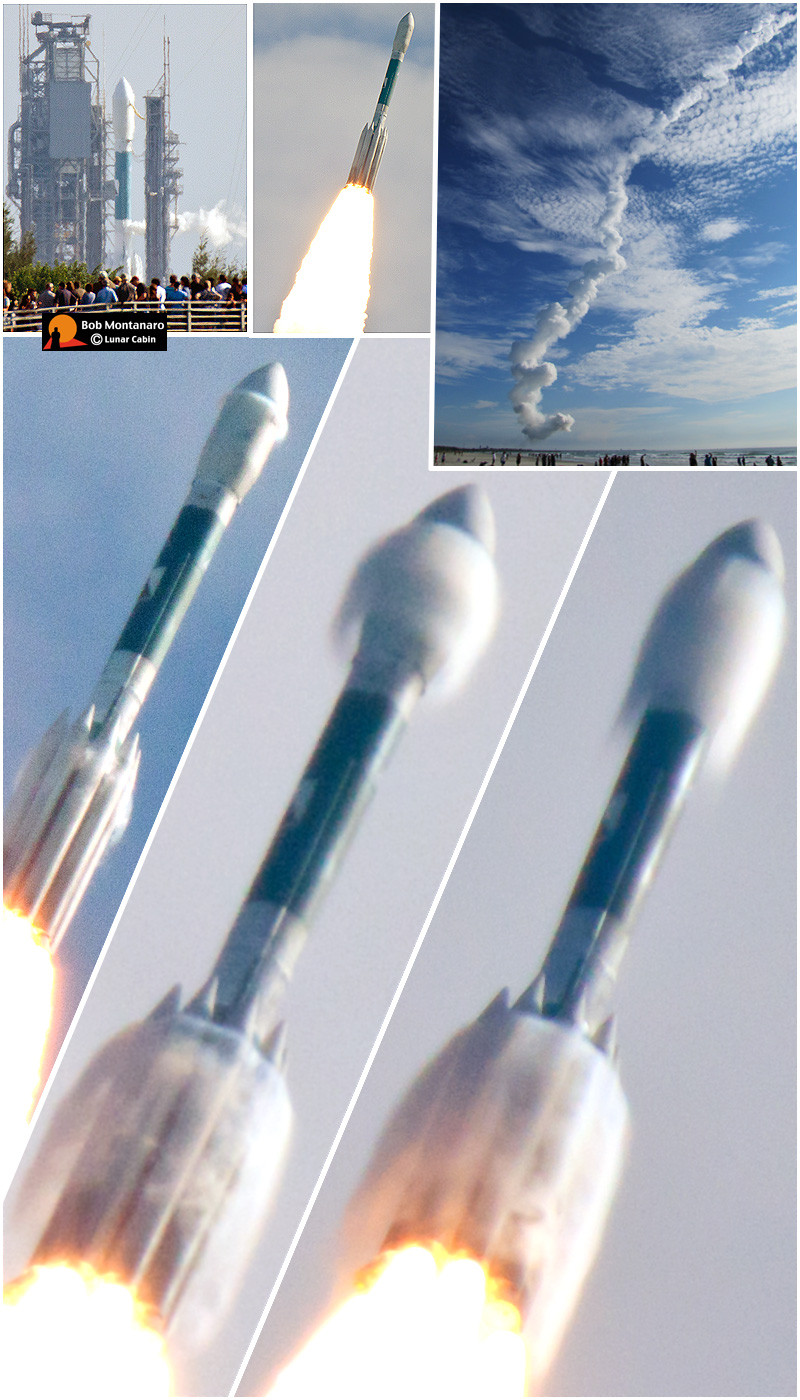 |
|
 |
|
The last scheduled Delta 2 rocket to launch from Cape Canaveral Air Force Station sends a pair of spacecraft to the Moon at 9:08 a.m. on 10 September 2011. The Delta 2 is being phased out in favor of rockets that can carry larger and heavier payloads. The images starting from upper left show the rocket steaming on the pad, liftoff, and then a view of the dissipating exhaust cloud. The three images below show the condensation caused by the shock wave that momentarily formed around the rocket as it broke through the sound barrier. As the rocket accelerated the condensation quickly vanished. Unfortunately for this last launch, the usually impressive view of the Delta 2 jettisoning its Solid Rocket Motors occurred out of sight behind a cloud from my viewing angle. Excerpts from the NASA Gravity Recovery and Interior Laboratory (GRAIL) press kit: The two spacecraft (GRAIL-A and GRAIL-B) are mirror twins. The Gravity Recovery and Interior Laboratory (GRAIL), will launch on a Delta II Heavy Launch Vehicle and use high-quality gravity field mapping of the Moon to determine the Moon's interior structure. GRAIL consists of two spacecrafts that will fly in tandem orbits around the Moon for several months to measure its gravity field in great detail. GRAIL’s primary science objectives will be to determine the structure of the lunar interior, from crust to core and to advance understanding of the thermal evolution of the Moon. GRAIL will also extend knowledge gained from the Moon to the other terrestrial planets. The new information that will be obtained will help when targeting a landing site for any future missions. Each spacecraft will carry multiple cameras onboard to document their views and to allow students and the public to view observations from the satellites. Some of GRAIL’S Objectives will be the following: GRAIL’s Ride Into Space |
|
All contents copyright Lunar Cabin |
|